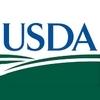Check out what is new in Pig Industry
Find the best technical articles, forums, and videos on Pig Industry at Engormix. Enter now and interact with the world's largest agricultural social network.
Nick Gallina (Purdue University) Background: Intestinal barrier dysfunction, inflammation, and elevated expression of heat shock protein 60 (Hsp60) are features of the dysbiotic gut. Probiotics can alleviate inflammation but are ineffective due to poor adhesion and adaptation to the inflamed bowel. We hypothesize that enhancing probiotic adhesion to intestinal cells may augment the immunomodulatory response, mucosal healing, and tight...
Comments : 0
Recommendations: 1
Nick Gallina (Purdue University) Background: Enterotoxigenic Escherichia coli (ETEC) strains are the primary perpetrators of colibacillosis in piglets, resulting in mortality and agribusiness economic woes. ETEC expressing fimbrial antigens, F4 and F18, are the predominant contributors to colibacillosis. F4 is most prevalent in neonatal diarrhea. F18 is more common in post-weaning colibacillosis. Intestinal epithelial interaction and...
Comments : 0
Recommendations: 0


Optimal tryptophan: lysine Ratio for 25-40 Kg Growing Pigs Fed Diets Containing 35 % Distillers Dried Grains with Solubles
Suggested link
Brian Aldridge (University of Illinois) Biological health is a complex topic of discussion and is often misunderstood as existing as a binary state in terms of the presence or absence of disease. In many ways, it is useful to explain health at a population or system level as the existence of individuals in 1 of 3 states: those in a healthy condition, those with a prediseased status, and those in a diseased state. At a systems level, it is useful to...
Comments : 0
Recommendations: 2
Yihang Li (University of Delaware) Developmental plasticity during the prenatal and early postnatal periods allows animals to adapt quickly to their environment and efficiently construct organ systems crucial for survival. These adaptations, which may be irreversible later in life, can lead animals to develop beneficial survival strategies or predispose them to chronic diseases. The gastrointestinal (GI) tract is a highly adaptive organ, contending...
Comments : 0
Recommendations: 0


Feed Conversion Ratio: Unveiling the Secrets of Sustainable Livestock Production
Suggested link
Young Dal Jang (University of Wisconsin–River Falls) This study was conducted to demonstrate the effects of second iron injection before weaning and iron levels in nursery diets on growth performance, hematological parameters, and fecal microbiome of pigs. A total of 70 newborn pigs from 7 sows were allotted to 4 treatments within litter, housed in farrowing crate without creep feed, and received the first dose (200 mg iron) at 2 to 3 d of age....
Comments : 1
Recommendations: 0
1. Introduction Artificial insemination (AI) in modern pig reproduction requires liquid-stored extended-semen. Extenders provide sperm with nutrients to maintain metabolic processes (1), prevent cold shock (2), control osmotic pressure and pH (3), and antibiotics present in extender inhibit bacterial growth (4). Despite the substantial improvements made on extender formulations in recent years, the quality of stored sperm decreases over time primarily due to the increased...
Comments : 0
Recommendations: 0


Prices Hold, Pressures Build: What’s Moving the Veterinary API Market
Suggested link
Introduction Some authors understand antimicrobial resistance (AMR) as an imminent “tragedy of the commons” (1), of anthropogenic nature and analogous to climate change in terms of its challenges (1–3). Although the resistance process is a natural defense mechanism of bacteria, it can be intensified by the misuse of antibiotics both in humans and animals. Inappropriate use of antibiotics (AMU) in human health is a powerful inducer of AMR. However, about 73% of the...
Comments : 0
Recommendations: 0
Mycotoxins are toxic compounds produced by certain types of fungi that can contaminate feed and feed ingredients with detrimental effects on pig performance. Effects of mycotoxins on swine include reduced feed intake, altered nutrient utilization, impaired growth performance, immune system suppression, reproductive issues, and organ damage. Mycotoxins can cause a decrease in feed intake. Affected animals may show reduced appetite, leading to lower nutrient intake and slower growth...
Comments : 0
Recommendations: 0
.jpg&w=3840&q=75)
Brian Aldridge (University of Illinois) shares insights on the environmental, nutritional, and maternal factors that affect the microbiome of different animals, during the 11th Symposium on Gut Health in Production of Food Animals in St. Louis, USA....
Comments : 0
Recommendations: 1
.jpg&w=3840&q=75)
Theresia Lavergne (Natural Biologics) comments on her research on the antiviral properties of medium-chain monoglycerides in pigs with PRRS challenge, as well as future tests on poultry viruses, during the 11th Symposium on Gut Health in Production of Food Animals in St. Louis, USA....
Comments : 0
Recommendations: 0


Optimal tryptophan: lysine Ratio for 25-40 Kg Growing Pigs Fed Diets Containing 35 % Distillers Dried Grains with Solubles
Suggested link
.jpg&w=3840&q=75)
Alex Alonso Wang (Big Herdsman) shows their poultry and swine equipment, explaining the features and benefits of the layer cage and the sow pen, during the Avicola Porcinos Expo 2023 in Buenos Aires, Argentina....
Comments : 0
Recommendations: 0
.jpg&w=3840&q=75)
Mike Kogut, Chair of the Organizing Committee, talks about the meeting's most interesting discussions and announces the dates for the next edition....
Comments : 2
Recommendations: 3


Feed Conversion Ratio: Unveiling the Secrets of Sustainable Livestock Production
Suggested link
INTRODUCTION Livestock monogastric species, including swine and poultry, are the main sources of meat; therefore, they are, at the same time, the main livestock species reared under intensive conditions (Eurostat, 2022). The pressure to increasingly optimize breeding resulted in antimicrobials often being used for both prophylactic and metaphylactic purposes to counteract the diseases of these animals or as growth promoters. It is currently commonly recognized that the misuse of...
Comments : 1
Recommendations: 0
.jpg&w=3840&q=75)
Todd Thurman (Swine Insights International) speaks on issues that COVID, disease outbreaks, and other changes have created in the animal industry, as well as possible solutions through innovation and creative thinking, in this Engormix interview....
Comments : 1
Recommendations: 0


Prices Hold, Pressures Build: What’s Moving the Veterinary API Market
Suggested link
.jpg&w=3840&q=75)
In this Engormix interview, Todd Thurman (Swine Insights International) explains how to keep the best balance between different goals: genetic progress and commercial production....
Comments : 1
Recommendations: 0
.jpg&w=3840&q=75)
In this Engormix interview, Todd Thurman (Swine Insights International) comments on the need for accurate and timely information to make important decisions, such as culling, and how artificial intelligence can help....
Comments : 0
Recommendations: 0
.jpg&w=3840&q=75)
Todd Thurman (Swine Insights International) talks about gestation and lactation feed, the increased use of technology, and the importance of aligning nutrition and feeding strategies, in this Engormix interview....
Comments : 1
Recommendations: 0

Wes Schweer (Cargill) comments on the use of zinc oxide, as well as adjusting levels in swine diets, during this Swine It interview with host Laura Greiner....
Comments : 0
Recommendations: 0


Optimal tryptophan: lysine Ratio for 25-40 Kg Growing Pigs Fed Diets Containing 35 % Distillers Dried Grains with Solubles
Suggested link

Wes Schweer (Cargill) talks about their impact on gut health, during this Swine It interview with host Laura Greiner....
Comments : 0
Recommendations: 0

Lisa Becton (National Pork Board) talks about the painful experience of Porcine Epidemic Diarrhea (PED), as well as the improvements made and the measures taken, during this Swine It interview with host Laura Greiner....
Comments : 0
Recommendations: 0


.jpg&w=3840&q=75)
.jpg&w=3840&q=75)


.jpg&w=3840&q=75)


.jpg&w=3840&q=75)

.jpg&w=3840&q=75)



















